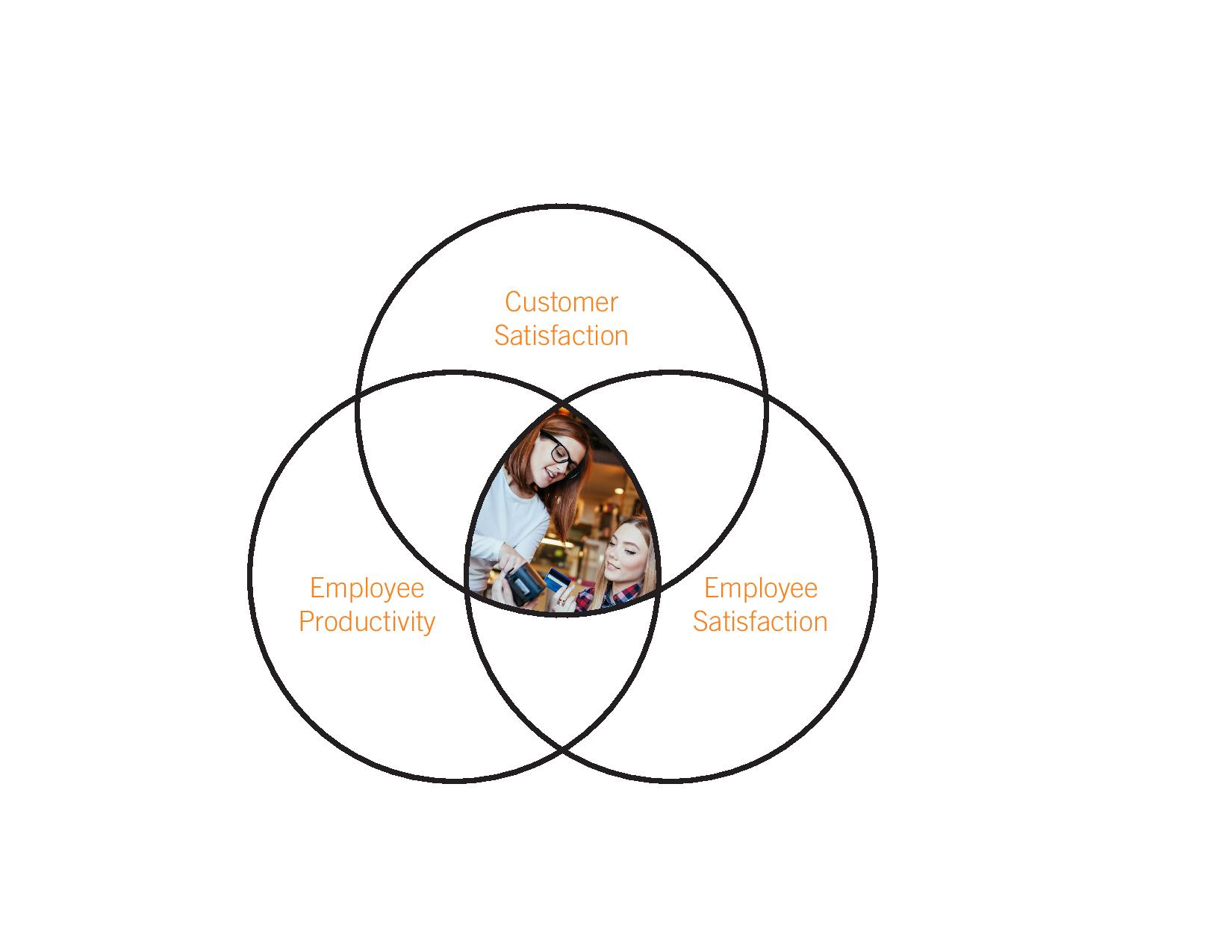Back-Office Automation Boosts Employee and Customer Satisfaction
3 Min Read By Courtney Allen
Fickle consumers keep restaurants on their toes, ensuring that operators place customer satisfaction above all else. As restaurant wages continue to rise, pressure mounts to squeeze more productivity from workers. In 2016, Datassential surveyed 500 operators and well over half (62 percent) said they had already seen an increase in labor costs in the past year and 64 percent said they expect an increase in 2017. At the same time, restaurants struggle to recruit, train and retain employees, making it increasingly crucial to reduce employee turnover.
Picture this: a Venn diagram where customer satisfaction, worker productivity and employee satisfaction intersect to create powerful synergy.
You may wonder, “Is this perfect intersection achievable and sustainable?” The answer is “yes,” with the right solution — automation. When we say automation, we’re not talking about drones delivering food or robots flipping burgers. We’re describing the back-office automation that occurs when stand-alone and legacy systems are integrated and share information. As a result, labor-intensive processes require less labor. Unburdened employees have more time to focus on a service-first culture and creating outstanding customer experiences.
For example, let’s look at a restaurant group that is able to integrate its point of sale (POS) system with its HR/payroll system. The manager only has to enter the employee data one time when hiring an employee. Moving forward, employee data is populated automatically in both systems, which leads to more efficiency. With the ability to share information, both systems can now produce the same version of the truth.
When systems talk to one another and operate as one back-office unit, managers no longer have to reconcile data from one system to the other. They no longer have to manually key or re-key information into multiple systems. Instead, managers are unburdened from these routine and time-consuming tasks. With that extra time, they can focus on training their employees to provide the best customer experience to guests. They can also achieve a more satisfying work-life balance, which can lead to long-term loyalty.
The people you partner with also need to understand and respect what makes your business unique, especially your culture.
An applicant tracking system (ATS) provides another opportunity for automation. After candidates apply, the ATS automates and tracks the application process, saving the manager enormous amounts of time. Managers can access the system of candidates, their history, and notes from previous interviews. The ATS also integrates with the HR system of record, providing notifications to begin the new hire process when a hire is made in the ATS, thus making the onboarding process run much more smoothly. Plus, the ATS can also connect to social media, which widens the organization’s reach for top candidates.
Here again, automation unburdens managers from routine tasks. Managers have more time to focus on training, which improves productivity and employee satisfaction, while reducing the risk of turnover. It also leads to a more positive customer experience, which increases customer satisfaction, positive posts on social media and repeat business.
Your restaurant business may be one of the thousands that have tried to improve operations through a software as a service (SaaS) provider, with disappointing results. Not all restaurant organizations operate the same, which is why SaaS solutions can disappoint.
The key to success is finding a proven HR/payroll company that has more than the right technology. Your integration partner must also have the right balance of technology and expertise. You need specialists who understand the restaurant business and all that goes with it. That means your partner must know the ins and outs of payroll and tax administration, HR management, risk management and compliance, employee benefits, and recruitment — for restaurants.
The people you partner with also need to understand and respect what makes your business unique, especially your culture. To automate your back office to benefit your employees and customers, it’s critical that the solution fits the need of your business and culture. When you’re fed up with the hassles of non-integrated systems, insist on a provider that understands your business, is willing to customize its processes to fit your needs, and has a proven record of doing so with restaurants.


